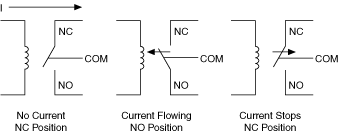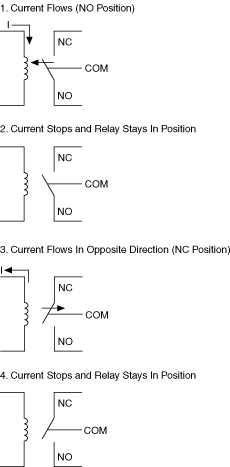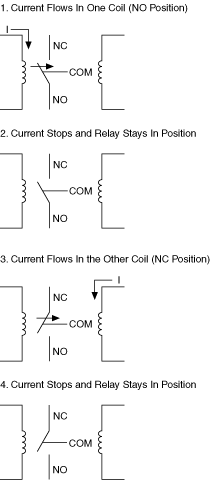Armature Relays
Armature relays are a type of electromechanical relay made of coils, an armature mechanism, and contacts. When the coil is energized, the induced magnetic field moves the armature. This movement opens or closes the contacts. If your switch module uses armature relays, consider the factors that affect relay life.

There are two types of armature relays, latching and nonlatching.
Nonlatching
A nonlatching relay has an initial position of normally closed (NC). This position is maintained by the force of a spring or permanent magnet while no current flows. The normally open (NO) contact is maintained by the force of a magnetic field while current flows through the coil. When the current stops, the relay reverts to its initial NC position.
Nonlatching armature relays are useful in control applications when the switch must return to a known state if power is lost.

Latching
A latching relay can have one or two coils. Latching relays have no default position and remain in their last position when the drive current stops flowing. While the relays themselves may be latching, their reset position in a module is based on the control circuitry and software (NI-SWITCH resets all relays on all modules during initialize and reset). Latching relays are useful in applications where power consumption and dissipation must be limited because, once actuated, the relays require no current flow to maintain their position.
In one–coil latching, the direction of current flow determines the position of the relay. In two–coil latching, the coil in which the current flows determines the position of the armature.
| One-Coil Latching Relay | Two-Coil Latching Relay |
|---|---|
 |  |